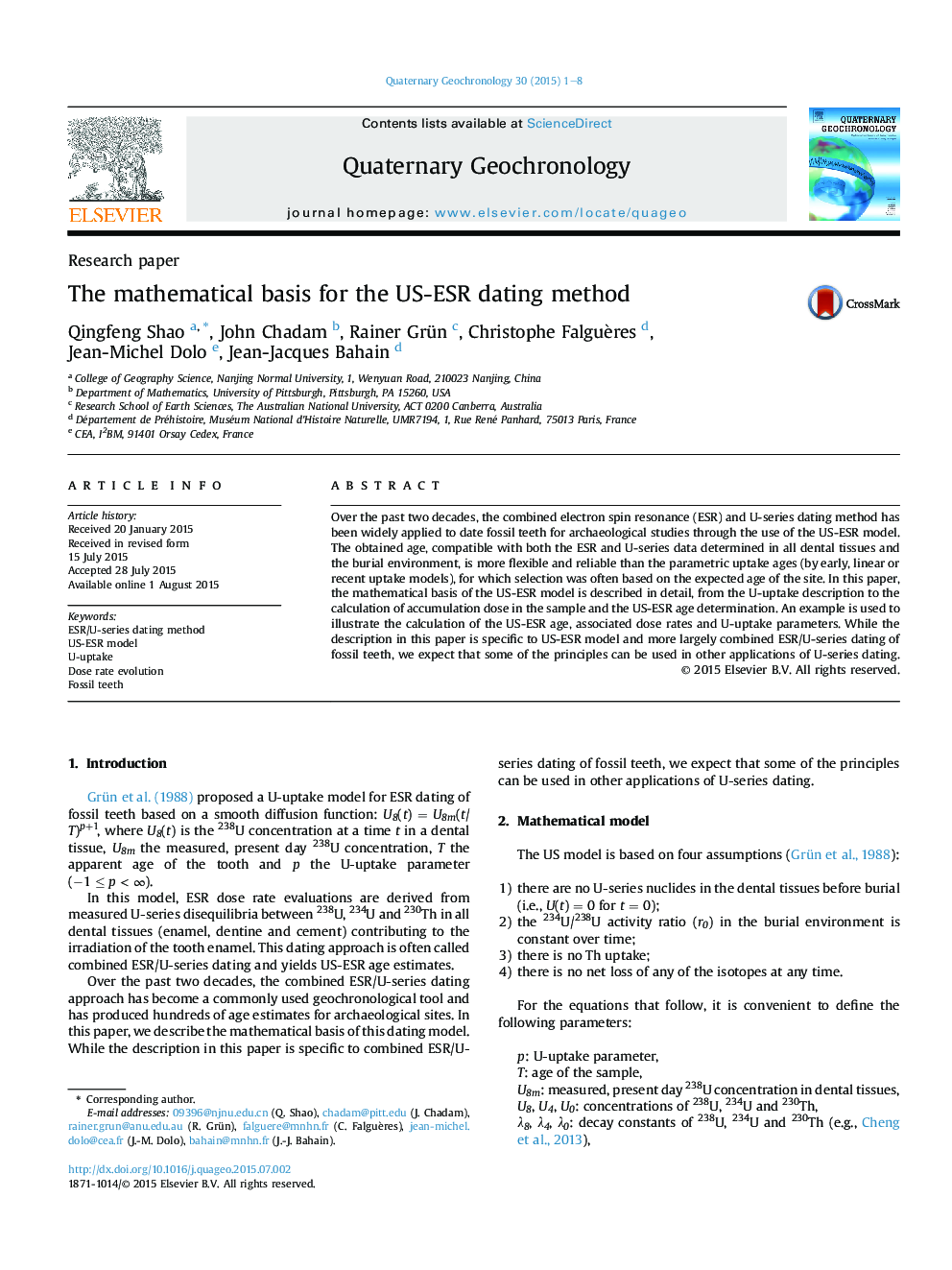| Article ID | Journal | Published Year | Pages | File Type |
|---|---|---|---|---|
| 6442646 | Quaternary Geochronology | 2015 | 8 Pages |
Abstract
Over the past two decades, the combined electron spin resonance (ESR) and U-series dating method has been widely applied to date fossil teeth for archaeological studies through the use of the US-ESR model. The obtained age, compatible with both the ESR and U-series data determined in all dental tissues and the burial environment, is more flexible and reliable than the parametric uptake ages (by early, linear or recent uptake models), for which selection was often based on the expected age of the site. In this paper, the mathematical basis of the US-ESR model is described in detail, from the U-uptake description to the calculation of accumulation dose in the sample and the US-ESR age determination. An example is used to illustrate the calculation of the US-ESR age, associated dose rates and U-uptake parameters. While the description in this paper is specific to US-ESR model and more largely combined ESR/U-series dating of fossil teeth, we expect that some of the principles can be used in other applications of U-series dating.
Keywords
Related Topics
Physical Sciences and Engineering
Earth and Planetary Sciences
Geochemistry and Petrology
Authors
Qingfeng Shao, John Chadam, Rainer Grün, Christophe Falguères, Jean-Michel Dolo, Jean-Jacques Bahain,
